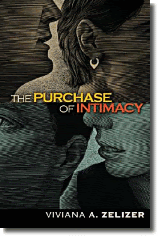He applied the "Page 99 Test" to Not Quite White and reported the following:
Matt Wray, an Assistant Professor of Sociology at the University of Nevada, Las Vegas, is currently a Robert Wood Johnson Health and Society Scholar at the Department of Society, Human Development, and Health at Harvard University.Page 99 of my book Not Quite White describes the discovery of hookworm disease among poor rural whites, the so-called “crackers” and “poor white trash” of the Southern states. This discovery — a brief episode in the history of medicine — was to have significant and lasting effects for poor whites in the United States.
The parasitic disease, picked up by contact with dirt contaminated with human excrement, often resulted in severe anemia, which sapped the strength and energies of the infected, leaving them dull and listless. Headlines hailed the discovery of the biological cause of the “disease of laziness,” and “the cracker disease” and poor whites became firmly linked to dirt and excrement in the public imagination. Ever wonder why present day stereotypes of poor whites so often make reference to dirt and filth? The hookworm episode tells the tale.
As a whole, the book describes over two hundred years of stereotyping and stigmatization (which I call “stigmatyping”) of poor rural whites, from the 1720s to the 1920s. The goal is not only to uncover a much neglected history — the poorest whites never figured in the multiculturalist histories that swept intellectual life in the 1980s and 1990s, except perhaps as racist villains — but to also offer some theoretical considerations about two areas of growing interest: the changing nature of white identity and the role of group boundaries and social categories in everyday life. What was the meaning of whiteness in the past? When and how do group identities become important and why? And what about the social categories used to label people — cracker, redneck, and poor white trash? What did these categories mean and, more importantly, what did they do?
Asking what categories and labels do; that is, asking what their social, cultural, and political effects are, led me to track not only the different ways that poor whites have been portrayed by others, but also the many ways that these portrayals served the interests and identities of the portrayers. The book is not given over to sentimental or romantic fantasies of what the lives of poor whites must have really been like — how they struggled, fought for and won dignity and respect. Instead, I opt for an account that focuses on the brute force prejudice and discriminatory actions of middle class and elite whites: how they marginalized the poorest whites, economically and politically; how they mobilized collective anger, contempt, and disgust towards those they deemed trash; and how even their reform efforts aimed at uplifting poor whites resulted in increased stigma, shame, and social exclusion. What did other whites gain from these exercises in social domination? Among other things, they gained a sense of moral entitlement to a privileged form of white identity, the very group identity they refused to extend to people of color and to the not quite white. As a nation, we have not even begun to acknowledge this complicated past. As a consequence, we fail utterly to grasp its significance for the present.
Learn more about Not Quite White at the publisher's website.
--Marshal Zeringue




















